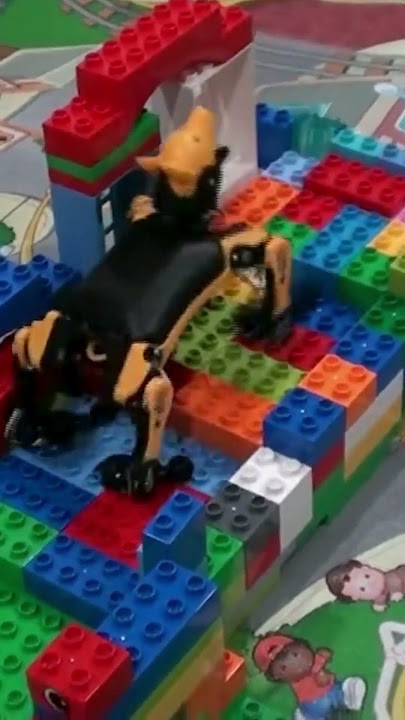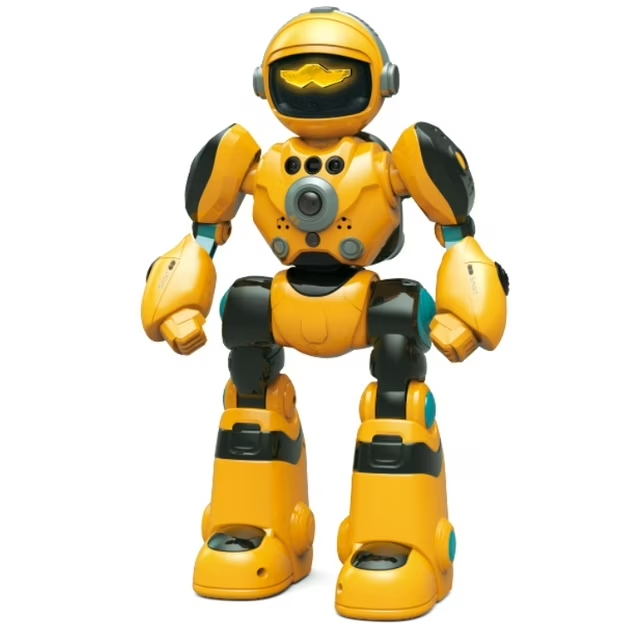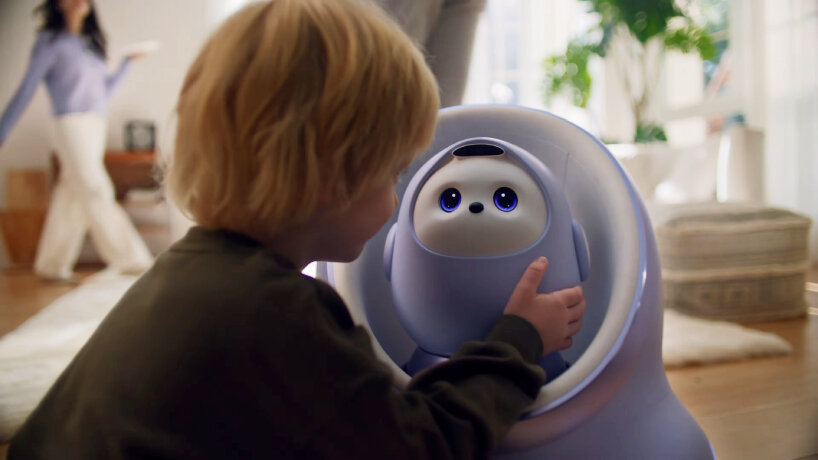
The Rebirth of Play: Why Programmable Toys Are Redefining Education and Entertainment
The Evolution of Programmable Play: From Simple Commands to AI Companions
The modern toy box is undergoing a technological revolution. Gone are the days when “interactive” simply meant a doll that could speak a few pre-recorded phrases. Today, the most exciting developments in the world of playthings are found in the realm of programmable toys. This resurgence marks a significant shift from niche gadgets for hobbyists to mainstream educational and entertainment powerhouses. The latest Programmable Toy News is filled with stories of charming robots, modular kits, and intelligent companions that are capturing the imaginations of children and adults alike. This trend is fueled by the convergence of sophisticated artificial intelligence, accessible robotics, and intuitive, user-friendly coding interfaces that demystify the world of programming.
The question is, why now? The perfect storm of miniaturized, powerful processors, advanced sensors, and a growing societal emphasis on STEM (Science, Technology, Engineering, and Mathematics) education has created fertile ground for this new generation of smart toys. These are not just passive playthings; they are dynamic platforms for learning, creativity, and problem-solving. They invite users to become creators, not just consumers. This article delves into the latest AI Toy Trends News, analyzing the technology that powers these intelligent companions, exploring their profound educational impact, and offering practical guidance for navigating this rapidly evolving and exciting market.
From LOGO Turtle to Modern Robotics
The concept of a programmable toy is not entirely new. Many adults will recall early pioneers like the LOGO Turtle, which taught basic programming concepts by instructing a simple robot to draw lines on a screen, or the first generations of LEGO Mindstorms, which brought robotics into the home. These early examples were groundbreaking, but they were often complex and focused purely on the mechanics of sequential commands. The Robot Toy News of today tells a very different story. The focus has shifted from mere instruction-following to creating toys with personality, character, and even a semblance of emotional intelligence. Modern robots use expressive digital eyes, nuanced movements, and responsive sounds to create a bond with their user, making the learning process feel less like a chore and more like playing with a friend.
The Current Landscape: A Diverse Ecosystem
The current market is a vibrant ecosystem with something for every age and skill level. The latest Coding Toy News highlights a variety of approaches to teaching programming logic. For younger children, screen-free robots like Botley 2.0 teach sequencing through physical cards. For slightly older kids, app-controlled spheres like the Sphero BOLT use a colorful, block-based coding interface to teach everything from basic movement to complex conditional logic. Meanwhile, the Robot Kit News is dominated by platforms that merge physical construction with digital creation. Offerings like LEGO Boost and Makeblock’s mBot are prime examples of Robot Building Block News, where children first build their robot from modular components and then bring it to life with code. This process provides a tangible connection between the digital commands and the physical outcome. Perhaps the most compelling trend is the rise of the robotic companion, as seen in the latest AI Pet Toy News. These toys, which often resemble small, animated characters or futuristic pets, leverage AI to recognize faces, respond to voice commands, and develop unique personalities based on interaction, truly representing the cutting edge of AI Companion Toy News.
Under the Hood: The Technology Powering Intelligent Play
The magic of modern programmable toys isn’t just clever design; it’s a sophisticated symphony of hardware and software working in concert. Understanding the technology underneath provides a deeper appreciation for their capabilities and potential. The latest AI Toy Innovation News is driven by advancements in miniaturization and processing power, allowing for incredible complexity in a small, child-friendly package.

Sensors, Processors, and AI: The Brains of the Operation
At the core of every smart toy is a collection of sensors that allow it to perceive the world. The latest AI Toy Sensors News reveals a standard suite of components that has become common. High-resolution cameras enable computer vision for tasks like facial recognition, color detection, and navigating environments. Microphones are essential for the Voice-Enabled Toy News trend, allowing toys to respond to spoken commands and even distinguish between different users. Internally, accelerometers and gyroscopes provide a sense of motion and orientation, allowing a toy to know if it’s being picked up, shaken, or has fallen over. All this data is fed into an onboard processor that runs machine learning models. These AI algorithms are the “brains” that interpret sensory input and decide how the toy should react, whether it’s expressing an emotion, executing a programmed command, or learning a new trick.
The Software Stack: From Block-Based to Python
The true genius of the modern programmable toy lies in its software accessibility. The hardware is complex, but the user interface is designed to be inviting. This is where AI Toy App Integration News becomes critical. A well-designed companion app is the gateway to the toy’s potential. Most brands employ a tiered approach to coding that grows with the user’s skills.
- Beginner Level: This almost always involves a drag-and-drop, block-based visual language inspired by MIT’s Scratch. It allows children to snap together commands like puzzle pieces, providing an intuitive introduction to programming logic without the frustration of syntax errors.
- Intermediate Level: Some platforms offer a more advanced block-based system with variables, functions, and more complex logic, bridging the gap to text-based coding.
- Advanced Level: For teens and hobbyists, many toys offer a full Software Development Kit (SDK). This opens the door to programming the toy using standard text-based languages like Python or JavaScript, allowing for nearly limitless creativity and customization. This robust software support is a key topic in Toy AI Platform News.
Connectivity and Ecosystem Integration
Modern smart toys are rarely isolated devices. They use Bluetooth or Wi-Fi to maintain a constant connection with their companion app on a tablet or smartphone. This connection is vital for programming the toy, receiving firmware updates, and in some cases, offloading heavy processing to the more powerful device. The trend is moving towards broader ecosystem integration. We are beginning to see toys that can interact with other smart devices in the home, or platforms that allow multiple toys to communicate and coordinate with each other. Regular software patches, a focus of AI Toy Updates News, can add new features, games, and educational content long after the toy has been unboxed, significantly extending its lifespan and play value.
More Than a Toy: The Educational and Developmental Impact
While the entertainment value of a robot that zips around the room is undeniable, the true significance of this movement lies in its profound educational and developmental impact. These toys are Trojan horses for learning, embedding critical 21st-century skills into an engaging and playful experience. The discourse around STEM Toy News has shifted from simple science kits to these integrated, interactive learning platforms.
Cultivating 21st-Century Skills
At its most basic level, a programmable toy is an exceptional tool for teaching the fundamentals of coding. Through hands-on experimentation, children intuitively grasp core concepts like sequences, loops, conditional statements (“if this, then that”), and variables. The process of creating a program that fails, analyzing the problem, and fixing it (debugging) is one of the most valuable lessons, teaching resilience, patience, and logical thinking. But the benefits extend far beyond computer science. Programming a robot to navigate a maze hones spatial reasoning and problem-solving skills. As covered in AI Learning Toy News, these platforms provide a tangible, responsive way to test hypotheses and see immediate results, which is the very essence of the scientific method. The potential applications are vast, from AI Science Toy News covering robots used to demonstrate physics principles, to AI Language Toy News where interactive characters help children practice vocabulary.

Real-World Applications and Scenarios
The educational potential of these toys is best illustrated through real-world scenarios. Imagine a classroom where students are learning about geometry. Instead of drawing shapes on paper, they program a fleet of small robots to trace out squares, triangles, and circles on the floor, calculating angles and distances. This active, kinesthetic approach makes an abstract concept concrete and memorable. In another scenario, a child uses a toy that’s the subject of recent AI Storytelling Toy News to build an interactive narrative. They program the robot to act sad when a certain character is mentioned or play a triumphant sound effect when a challenge is overcome. This blends creative writing with logical thinking. The rise of AI Drawing Toy News and AI Art Toy News showcases toys that can be programmed to hold a pen and create intricate patterns, demonstrating how technology can be a medium for artistic expression, not just a tool for technical tasks.
The Social and Emotional Learning (SEL) Component
A fascinating and emerging area of impact is in Social and Emotional Learning (SEL). The focus of much AI Companion Toy News is on creating robots with believable personalities. When a child has to “care” for their robotic pet by ensuring it’s “fed” or “played with” (through programming challenges), it teaches responsibility and routine. When a robot uses its expressive eyes and sounds to react to a child’s actions, it can help them understand cause and effect in social interactions. This also brings up important discussions central to AI Toy Ethics News, such as the nature of emotional attachment to artificial entities and the responsibility of manufacturers to design these interactions ethically.
Navigating the Smart Toy Market: A Guide for Consumers and Educators
The explosion of options in the smart toy market is exciting, but it can also be overwhelming for parents, caregivers, and educators. Making an informed choice requires looking beyond the flashy packaging and considering the long-term value and safety of the product. Following the latest AI Toy Brand News and reviews is a good start, but a deeper set of criteria is needed.

Key Considerations Before You Buy
- Age Appropriateness and Learning Curve: This is the most critical factor. A toy that is too simple will be boring, while one that is too complex will cause frustration. Look for products that clearly define their target age range and, ideally, offer a scalable learning path. The best platforms grow with the child, transitioning from simple block-based coding to more advanced text-based options.
- Durability and Longevity: Children are not always gentle. A well-built toy that can withstand a few tumbles is a better investment. Furthermore, consider the toy’s long-term engagement. Does it rely on a single gimmick, or does it offer an open-ended platform for creativity that will keep a child engaged for months or years?
- Community and Support: A strong user community is an invaluable resource. Check if the manufacturer hosts forums or if there are active social media groups. The availability of AI Toy Community News and a wealth of user-created AI Toy Tutorials News indicates a healthy, supportive ecosystem for when you inevitably run into a challenge.
- Safety, Security, and Privacy: This cannot be overstated. Any toy with a camera, microphone, or internet connection is a potential security risk. It is imperative to research the manufacturer’s privacy policy. The latest discussions in AI Toy Safety News emphasize choosing brands that are transparent about what data is collected, how it is stored, and who has access to it. Look for parental controls and ensure the device’s software is regularly updated to patch security vulnerabilities.
Common Pitfalls to Avoid
When shopping, be wary of toys that are essentially “one-trick ponies” with very limited programming options, as their novelty will wear off quickly. It’s also a mistake to focus only on the physical robot. The software is half the experience; read AI Toy Reviews News that specifically critique the app’s usability, stability, and educational content. Finally, remember that these toys are tools to augment learning and play, not replace fundamental human interaction and traditional, unstructured playtime.
The Future is Programmable
The landscape of play has been irrevocably altered. Programmable toys have successfully evolved from complex, niche gadgets into sophisticated, accessible, and deeply engaging educational platforms. They represent a powerful synthesis of entertainment and learning, masterfully teaching the foundational skills of the digital age—coding, problem-solving, and computational thinking—through the universal language of play. They foster creativity, build resilience, and are even beginning to support social and emotional development.
As we look to the horizon, the latest AI Toy Future Concepts News promises even more integration and intelligence. We can anticipate deeper personalization, where toys adapt more precisely to a child’s individual learning style, and greater integration with other technologies, as highlighted in emerging AR Toy News and VR Toy News. The core takeaway is clear: the most impactful AI Toy Innovation News isn’t just about creating a smarter toy, but about empowering a smarter generation. The future of play is not just about having fun; it’s about building the next wave of creators, innovators, and thinkers, one line of code at a time.



